Kaspersky Lab
Client: Kaspersky
Capabilities: Brand Videos
Project Summary
Our colleagues from Kaspersky Lab have developed an innovative cybersecurity policy for the use of bionic devices and asked us to produce a video which very clearly and, of course, beautifully presents a generalized model of the exclusive bionic meta-office of the future.
Idea
Production Treatment
Our studio received a request in the form of a detailed director's brief. We've deeply analysed the client's script, and came out with our treatment, in which we described the main idea in detail.
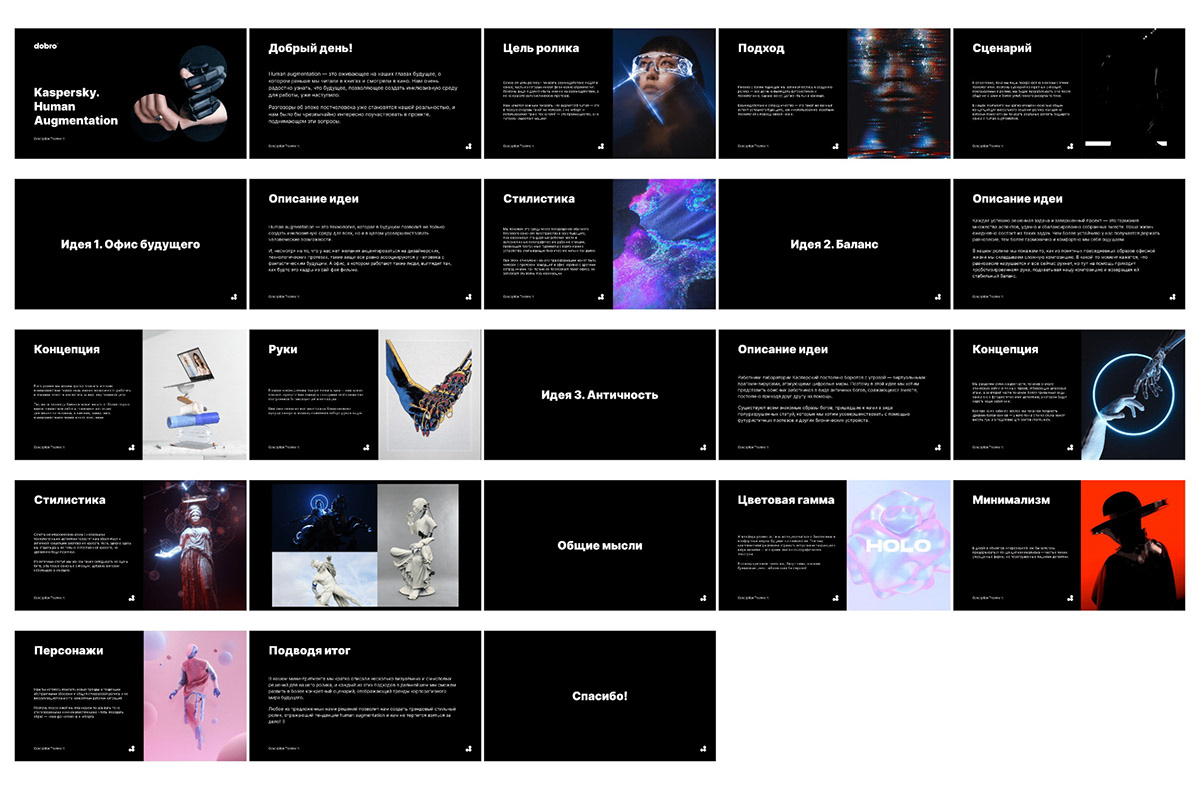
Storytelling
The next step was to turn our idea into a full-fledged scenario with a storyboard, and to think over the action, characters, camera angles, and its movement mechanics.
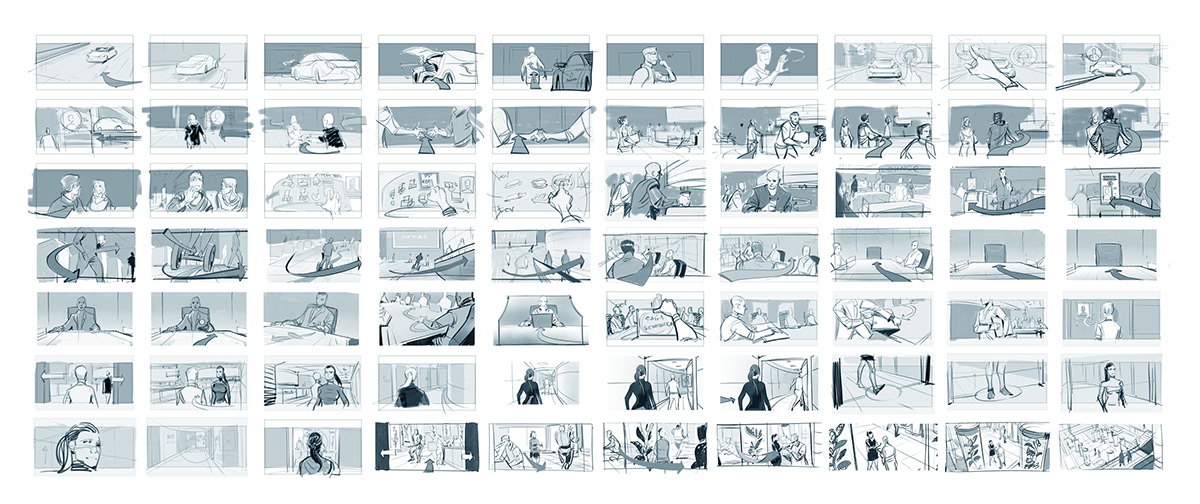
Preshoot and Animatic
Based on the storyboard and the audio track, we made our own preshooting. And although it almost always looks ridiculous, in fact, it is a powerful tool that allows you to significantly speed up the production of future animatics, and get a guaranteed predictable result, which is extremely important in terms of tight deadlines.
Locations
First approach
Our first approach in creating locations was to try to use the existing architecture, stylistically necessary for us, while making minimal adjustments. We made a survey among the available three–dimensional architectural models, and immediately it became clear that we could not get out so easily — too specific requirements for each of the locations implied after all the individual design and the development of each of them.
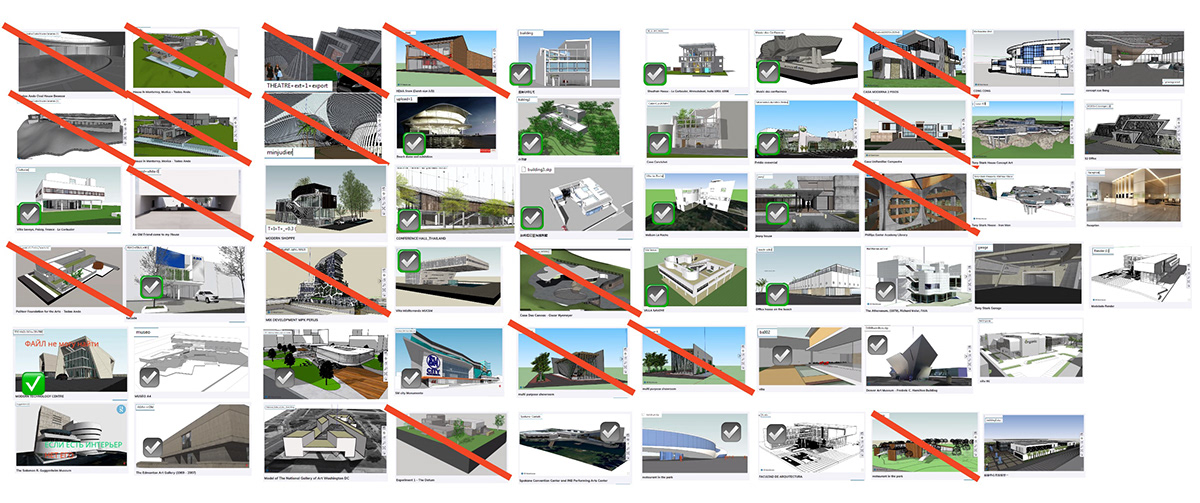
Second approach
The second approach in creating locations was to build locations directly in 3D, on the fly. We encountered Interesting solutions, but sorting through the options this way turned out to be too wasteful for us (in terms of resources and time).

A little more 3D searching



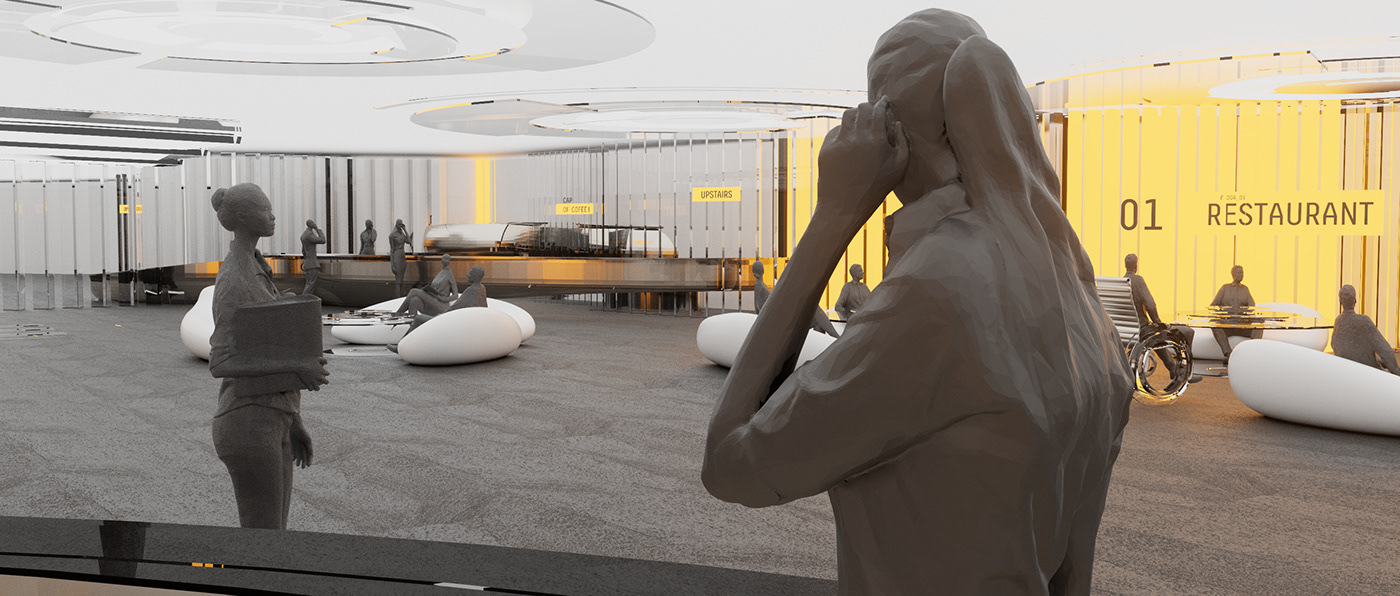

The third approach. Classical interpretation
As a result, our third approach was in following the classical method — we created manual, detailed concepts, which we then recreated in detail in 3D.






Augmentation
Human augmentation is the most important part of our project, so we approached the development of artificial parts of the human body in detail and fundamentally — creating a hand, arm and leg in great detail.
Arm
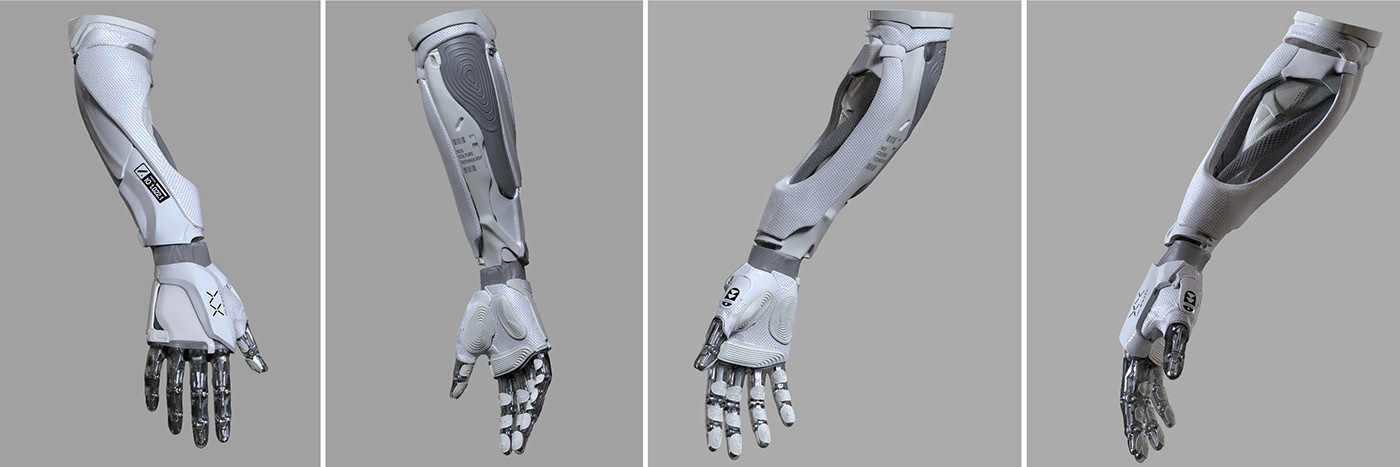
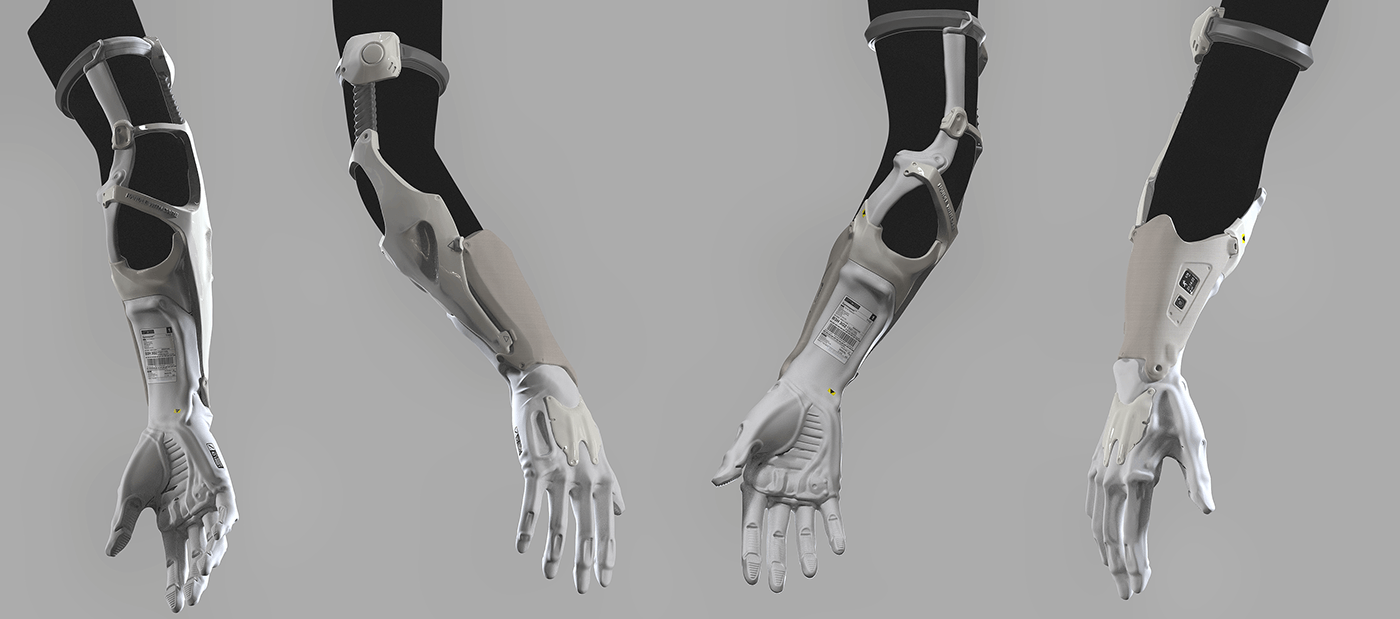
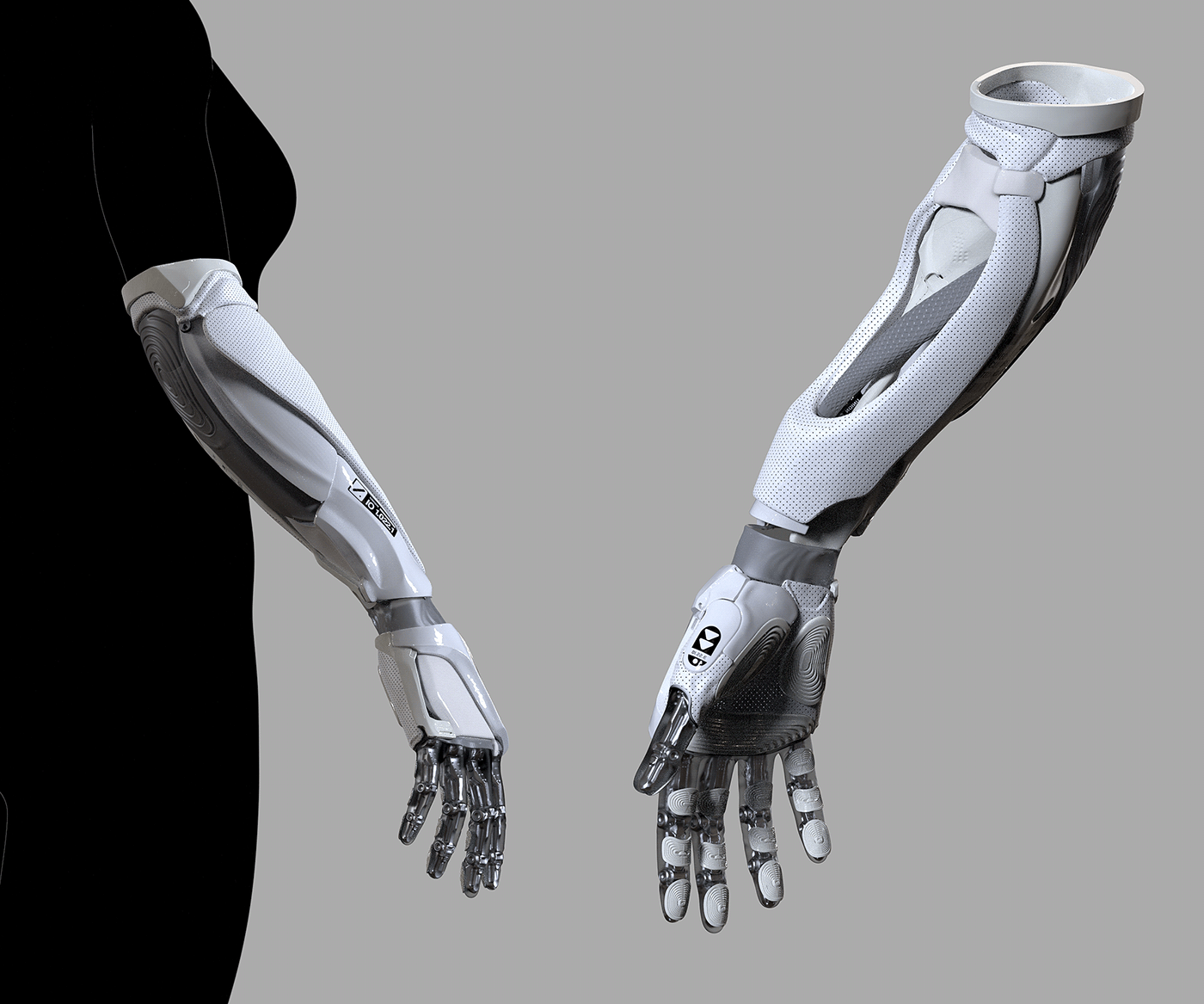

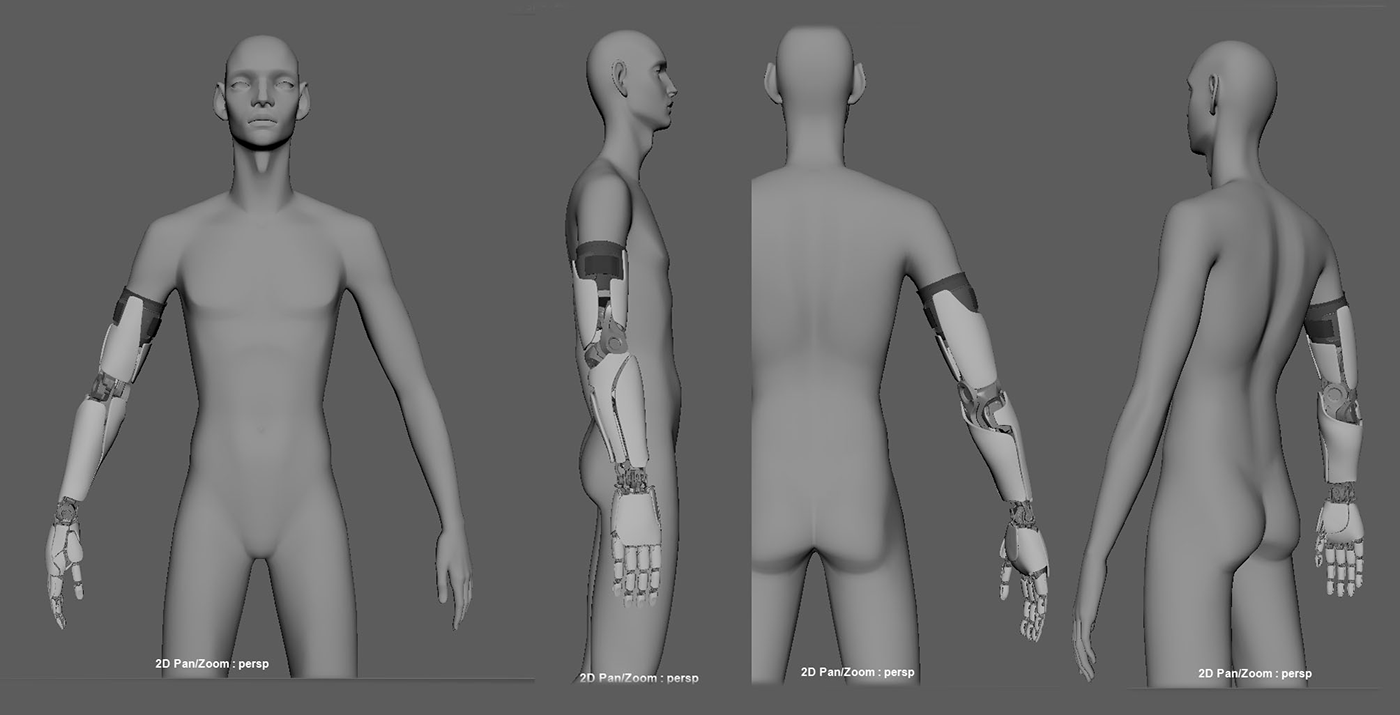
Hand
The first versions of the artificial hand for our intro with stones were entirely mechanical, but we faced a plot difficulty related to the fact that since we see only a hand in the frame, it can be mistaken for a robot hand. So, we needed to demonstrate a prosthesis, that's why later we left the hand with two living fingers.
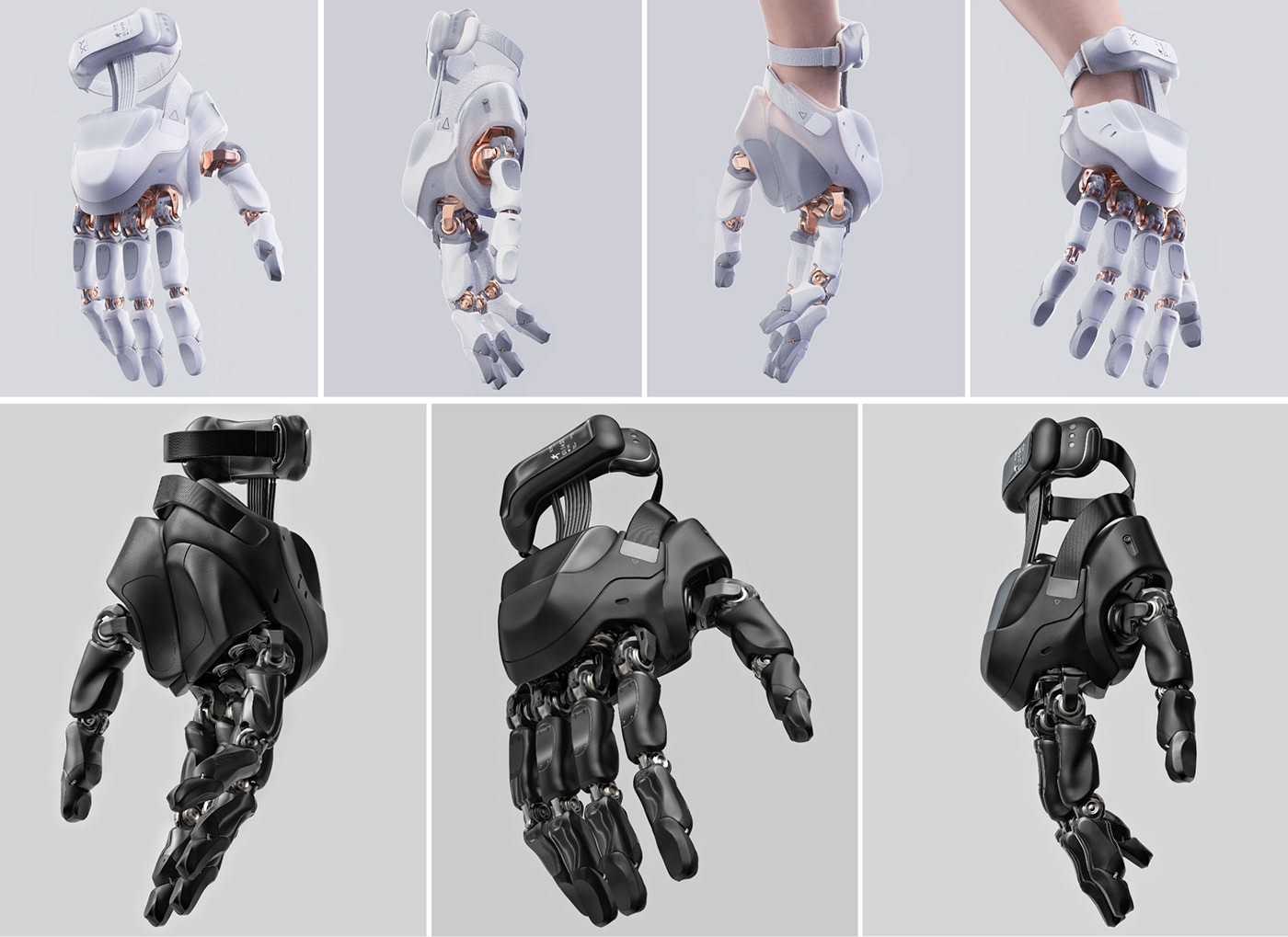
Leg
Also, our task was to create a leg for one of the heroines of our video — an employee of the office of the future. It was necessary to make an aesthetically pleasing prosthesis that would not try to be disguised as a standing leg and nevertheless would look stylish and beautiful, matching the masses and silhouettes with the second, real leg.
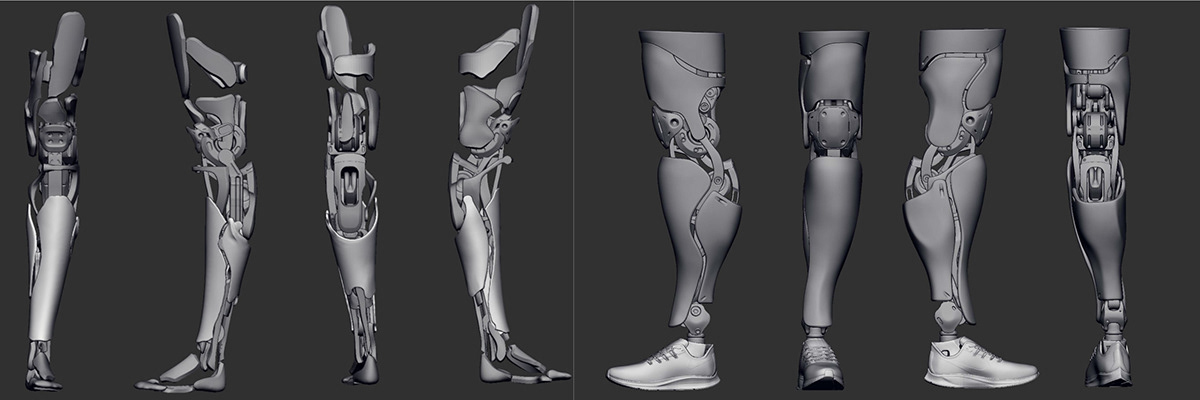
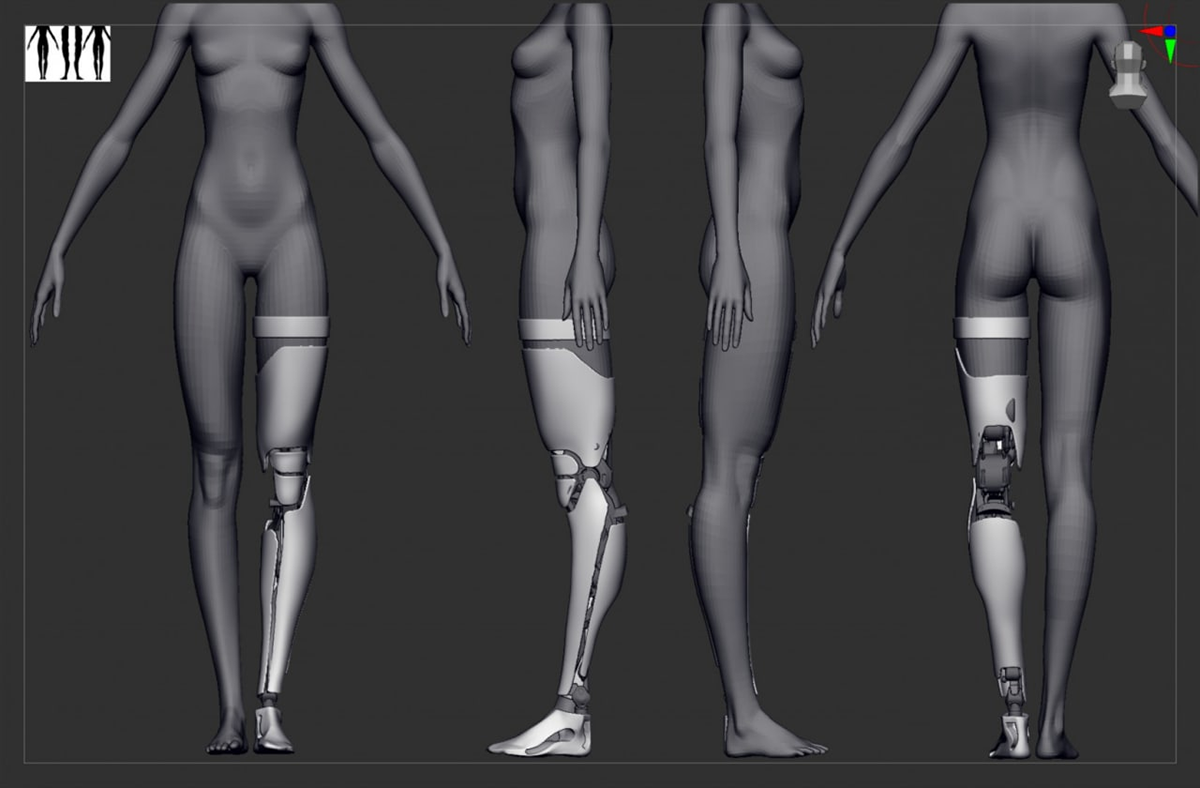


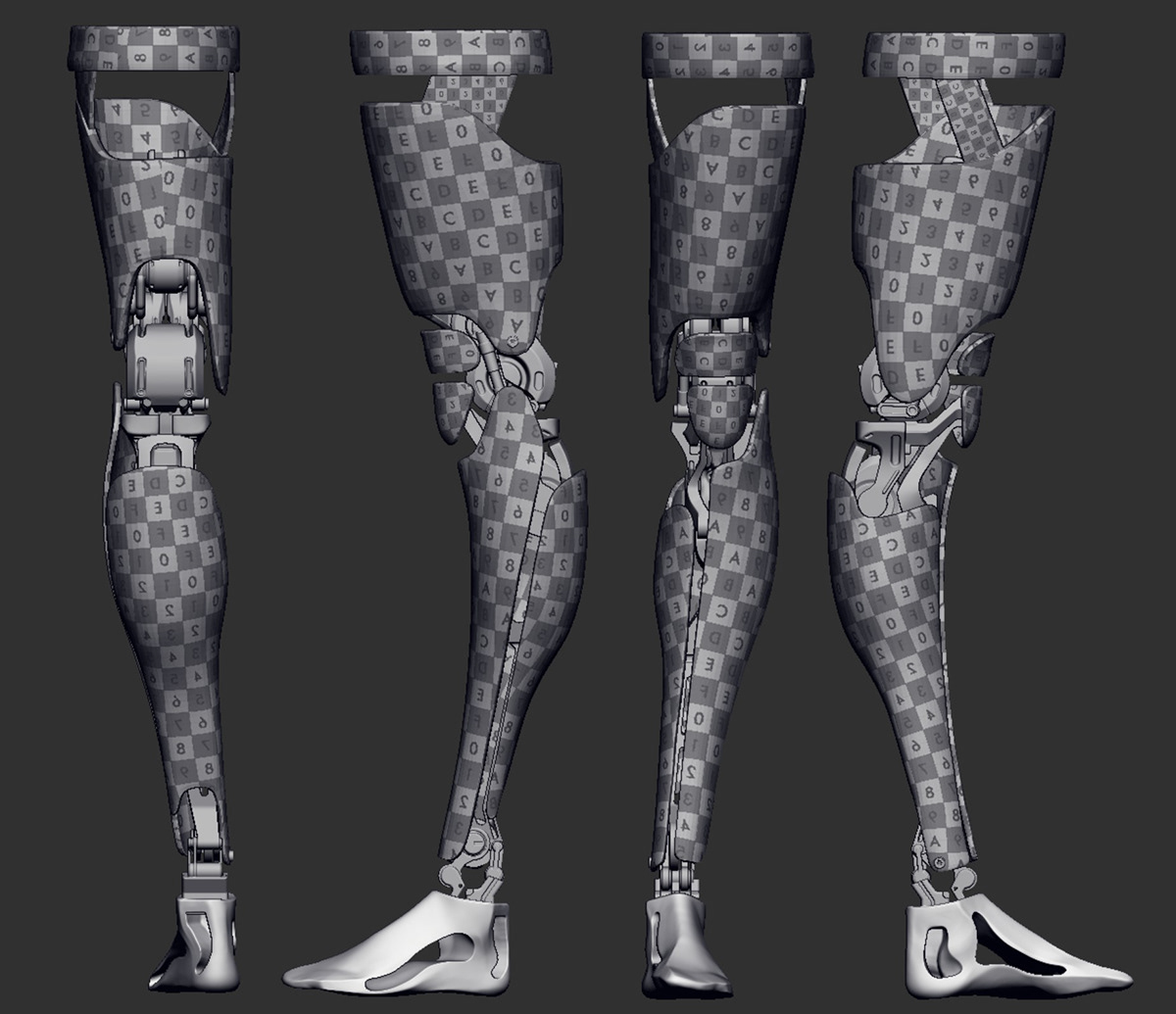
Props and devices
In addition to architecture, there are also a number of devices in our video, which we also decided to develop uniquely, in the same style of the entire video. Some of them can be seen below.
Seagway

Wheelchair

Exoskeleton
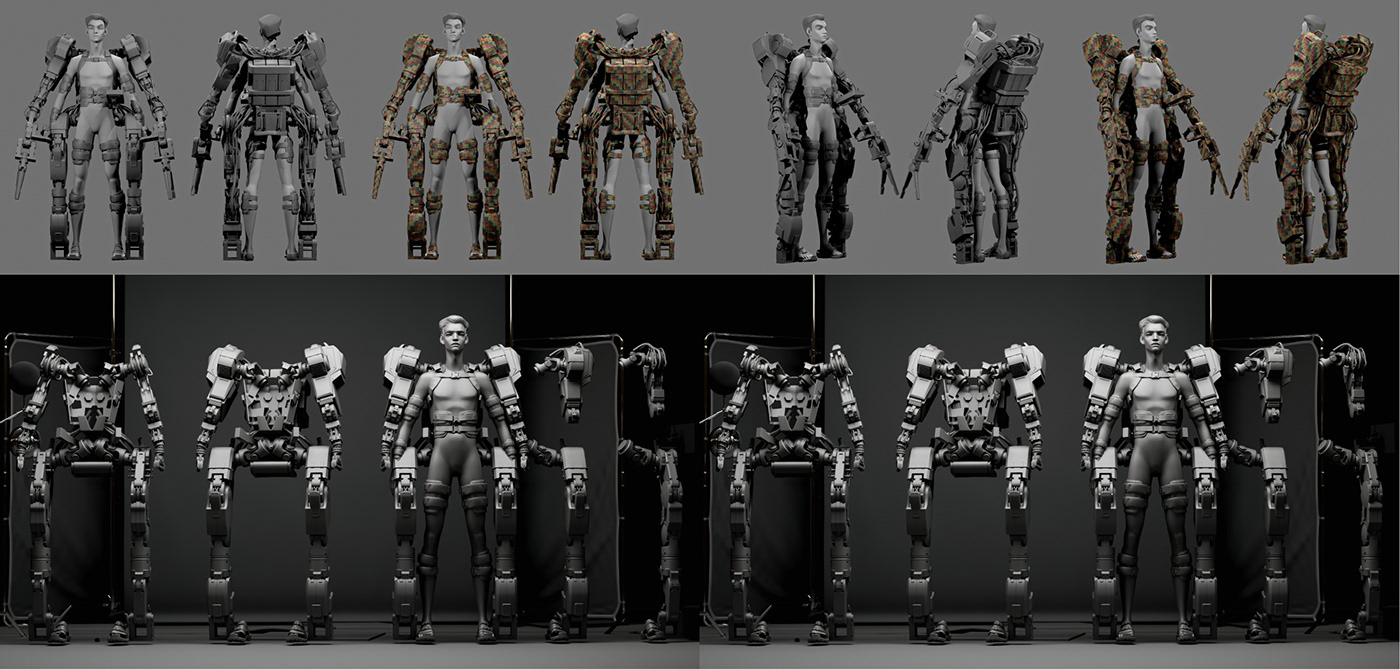
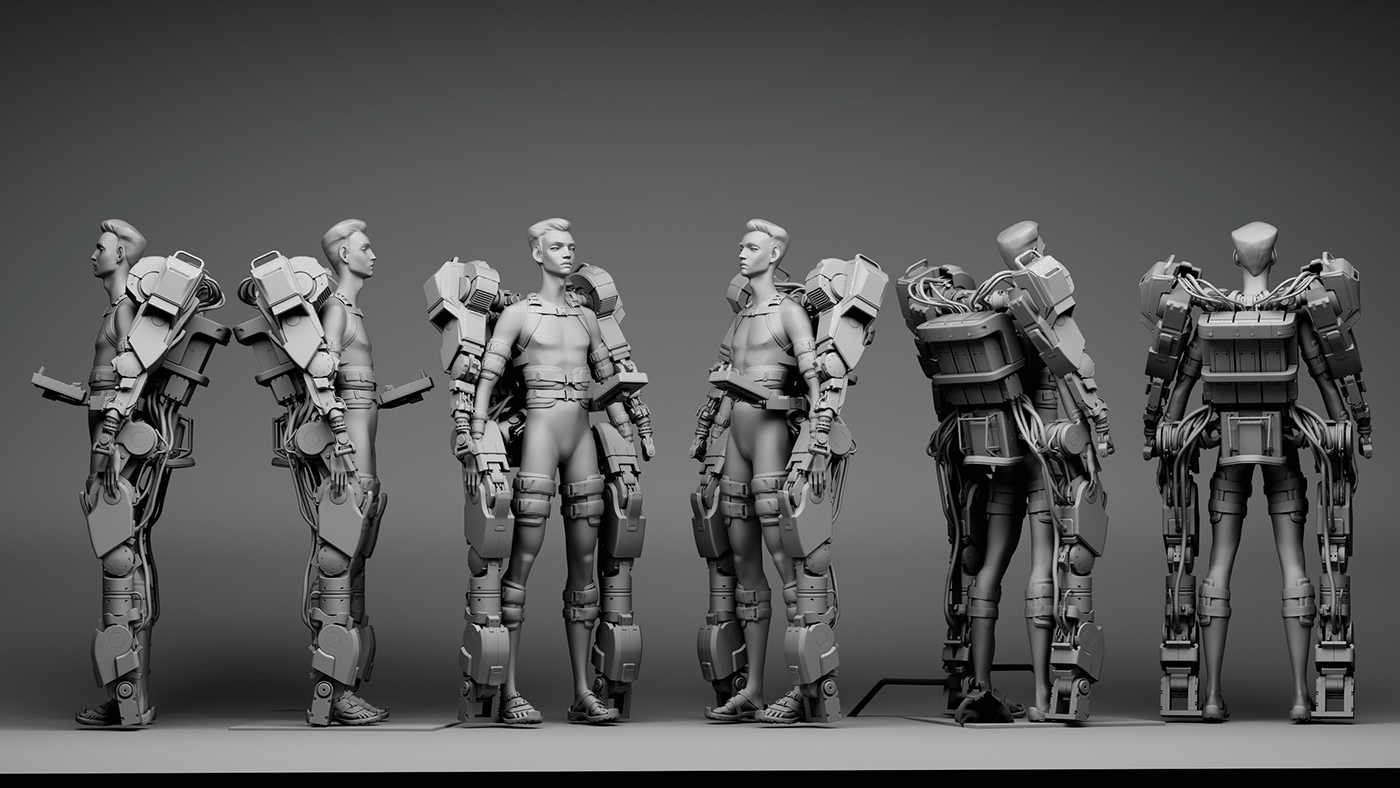
VR Helmet



Characters
Of course, the most important elements of our film are characters. And although there is no main character among them, and they are all just extras in our story, it is people who fill it with life, as well as form the final visual style of the video. We developed them carefully and meticulously, gradually working through each image.
We tried to find such a level of stylization so as not to accidentally enter the territory of photorealism, and at the same time, not to make it a children's cartoon. It was necessary to find a balance in proportions and exaggeration of body parts in order to create an individual and unique expressiveness of each character.
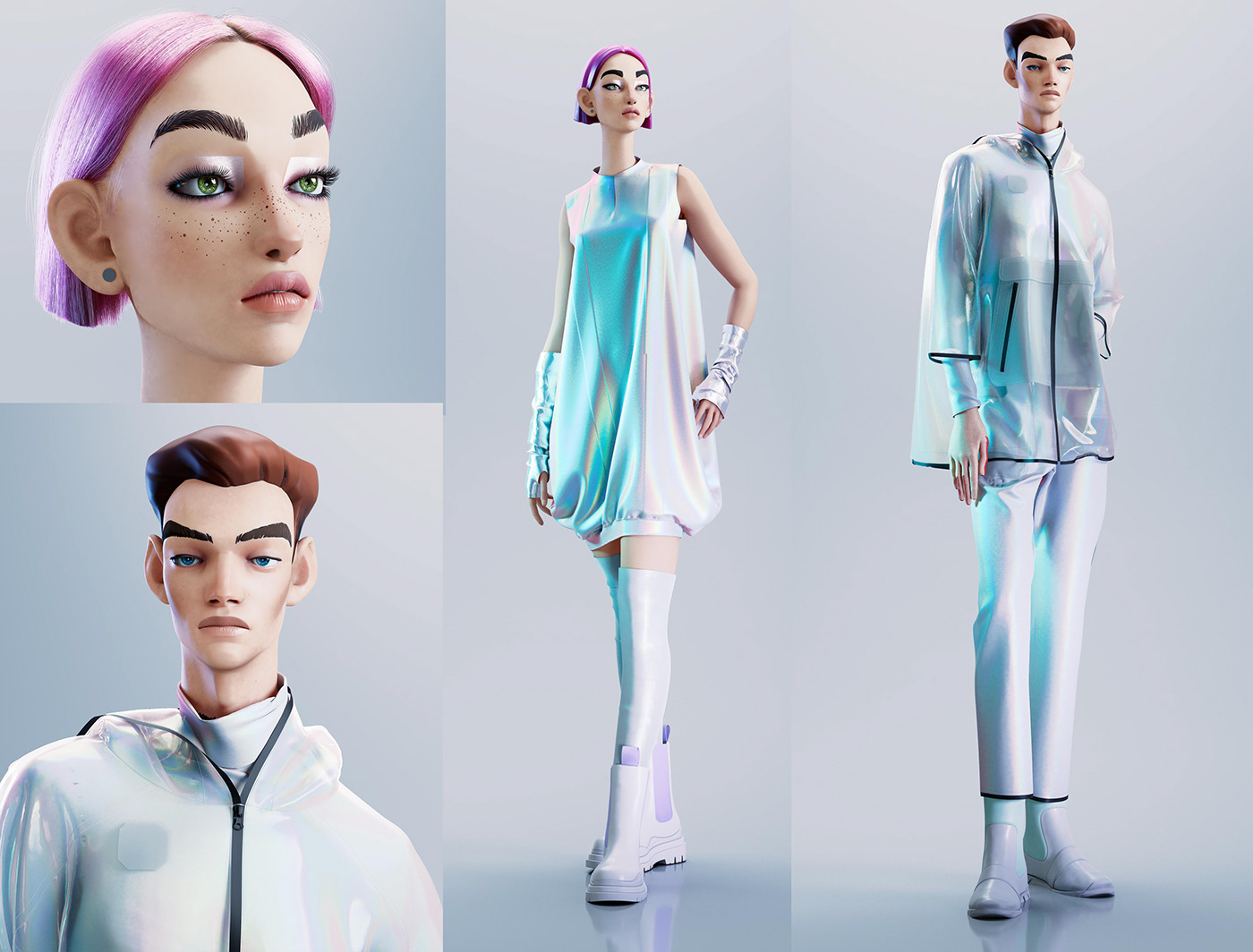
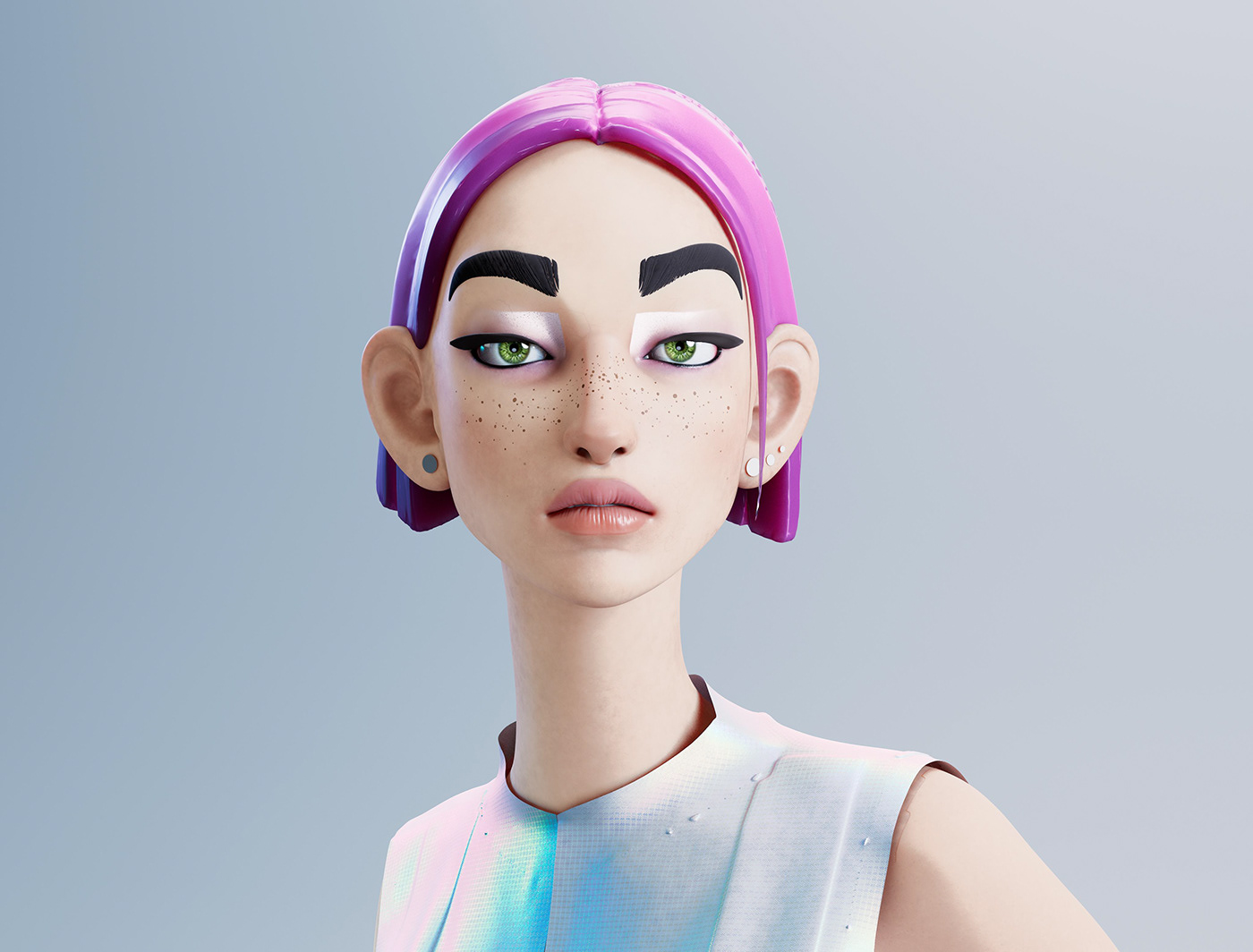
Hairstyles were also developed separately, and here we also had to find a balance between extravagance and ordinariness. They should have been expressive enough to emphasize the individuality of the characters.
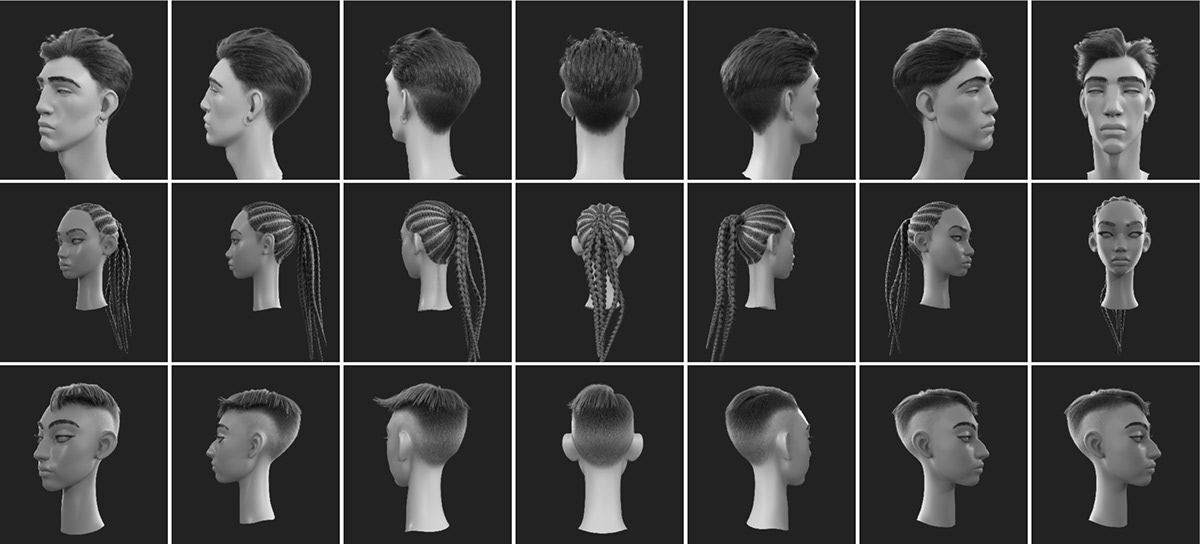
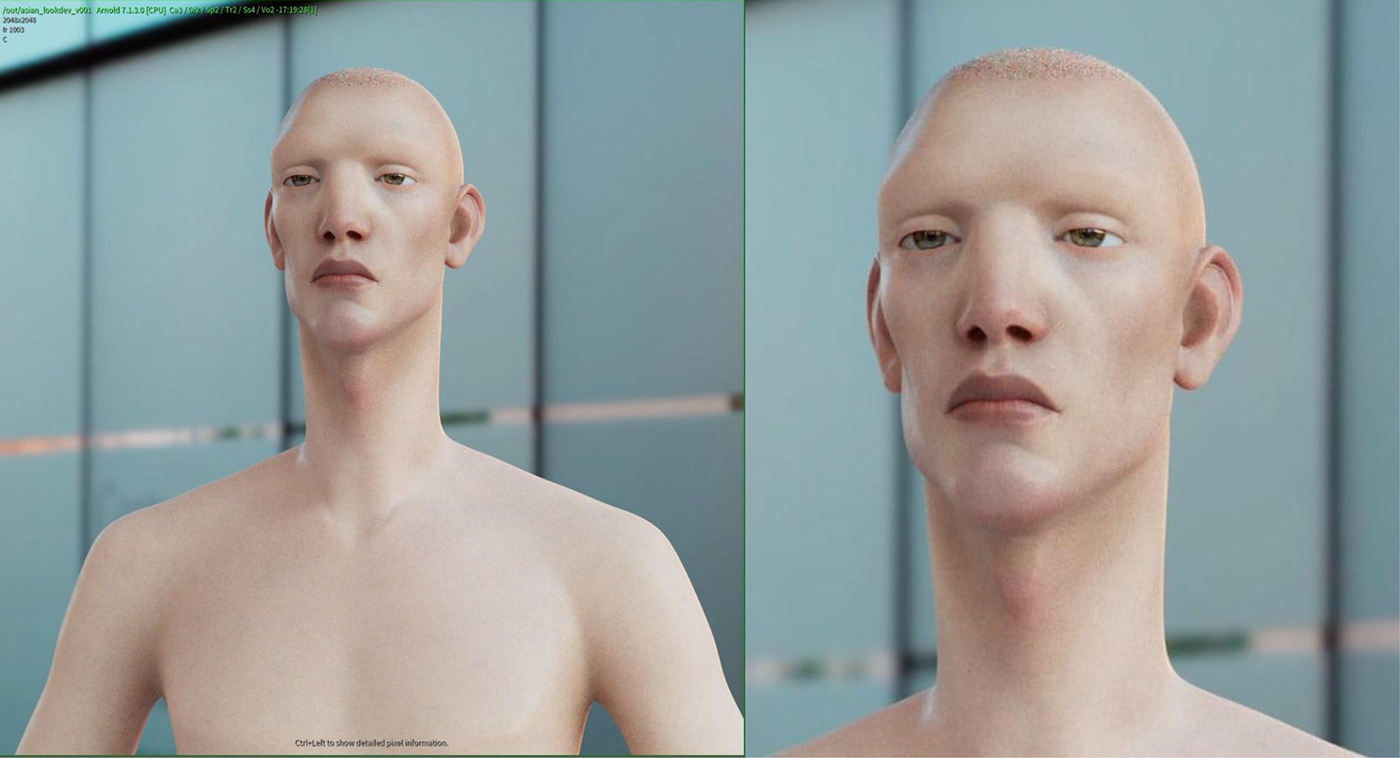
Clothes
Also, for each character, we have developed one or more sets of clothes and shoes in 3D, for which we subsequently created detailed simulations of the CG fabric so that the clothes look and behave realistically.
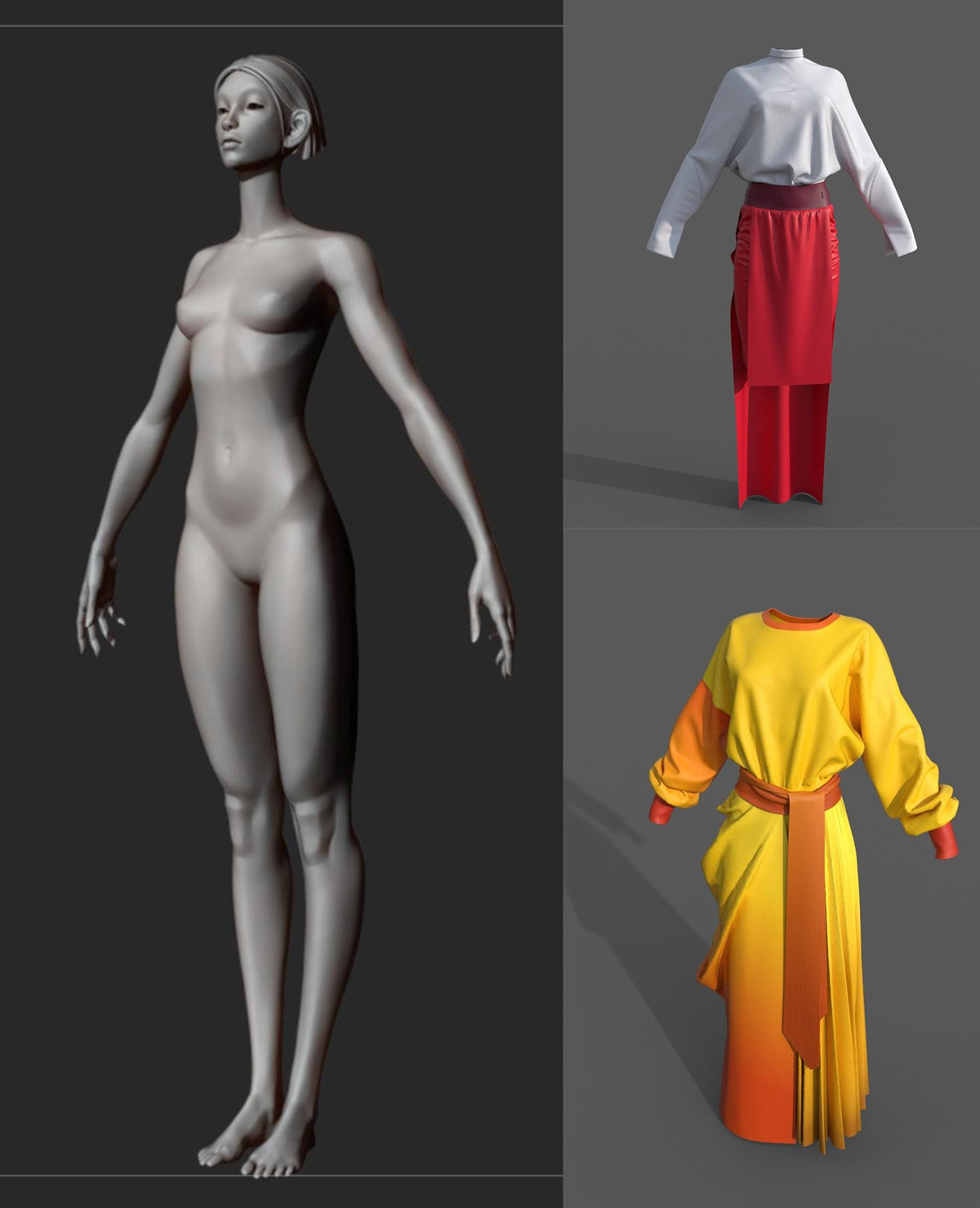
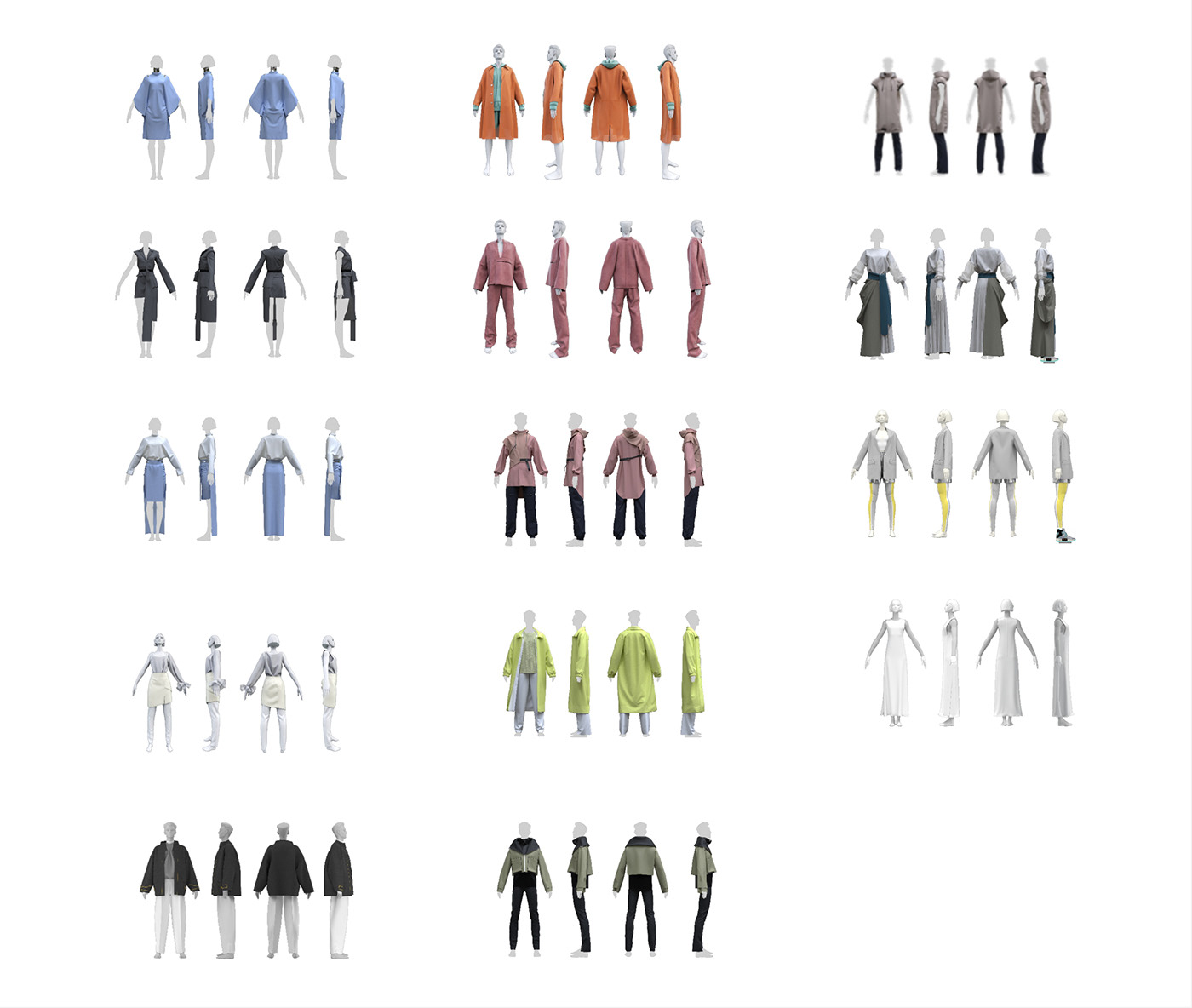
Interfaces
And, of course, our video wouldn't be complete if it weren't for augmented reality interfaces. It was very important for us to create not just beautiful and meaningless GUIs, but to fill them with meaning and logic. That's why we worked through every element and every animation movement.

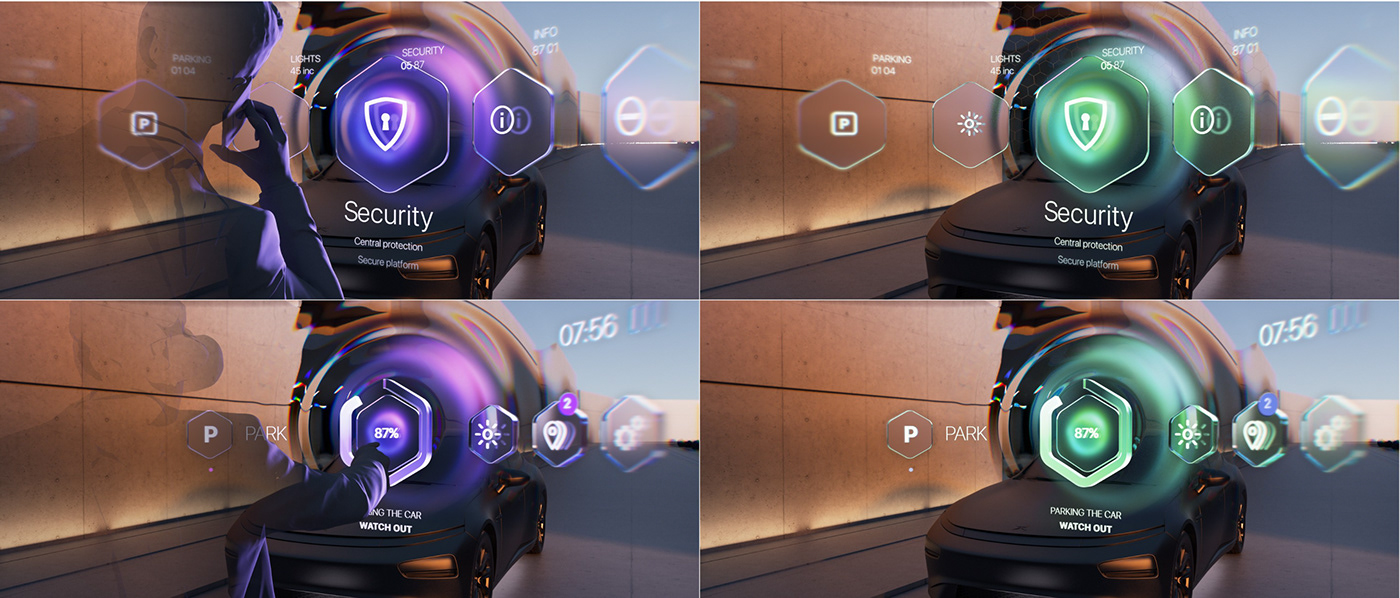
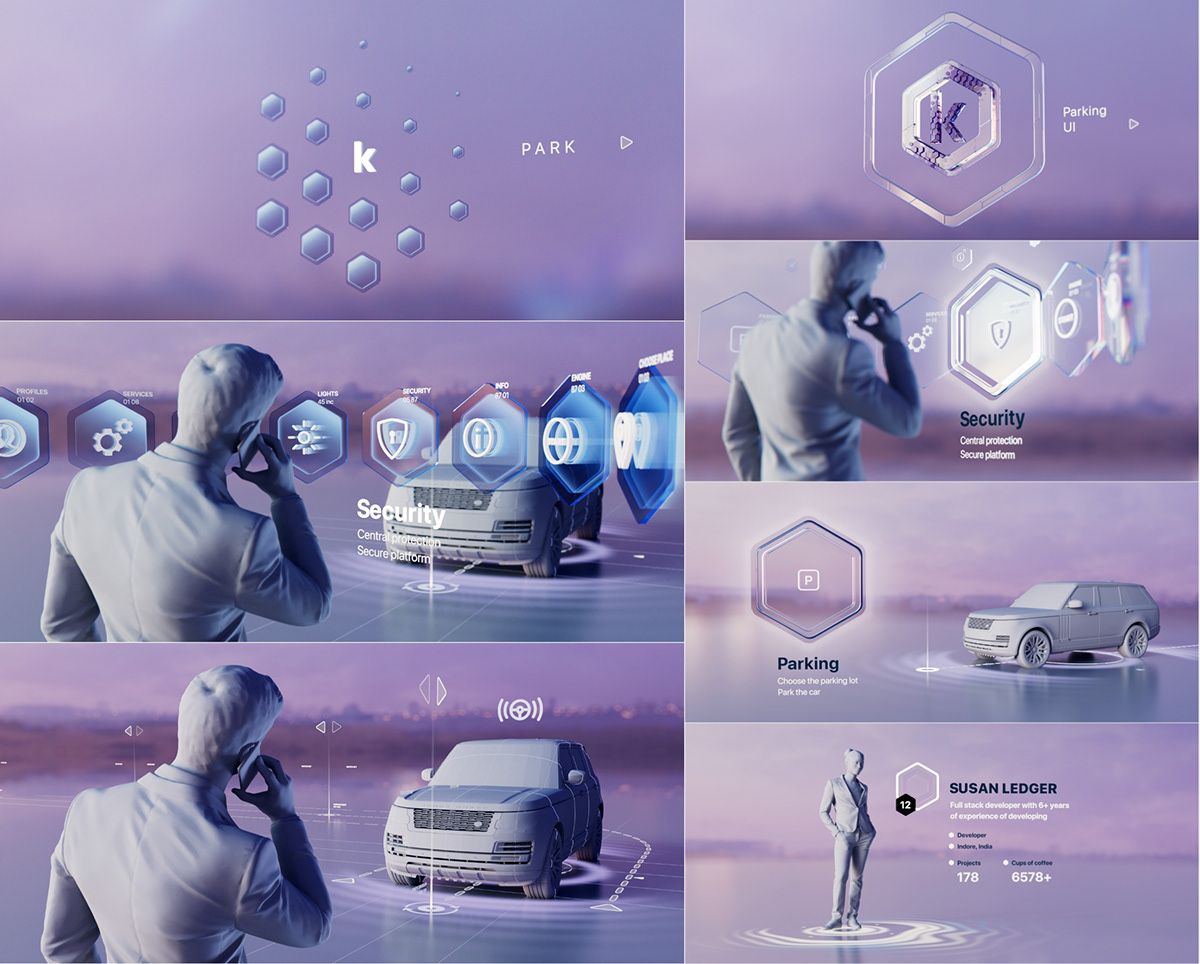


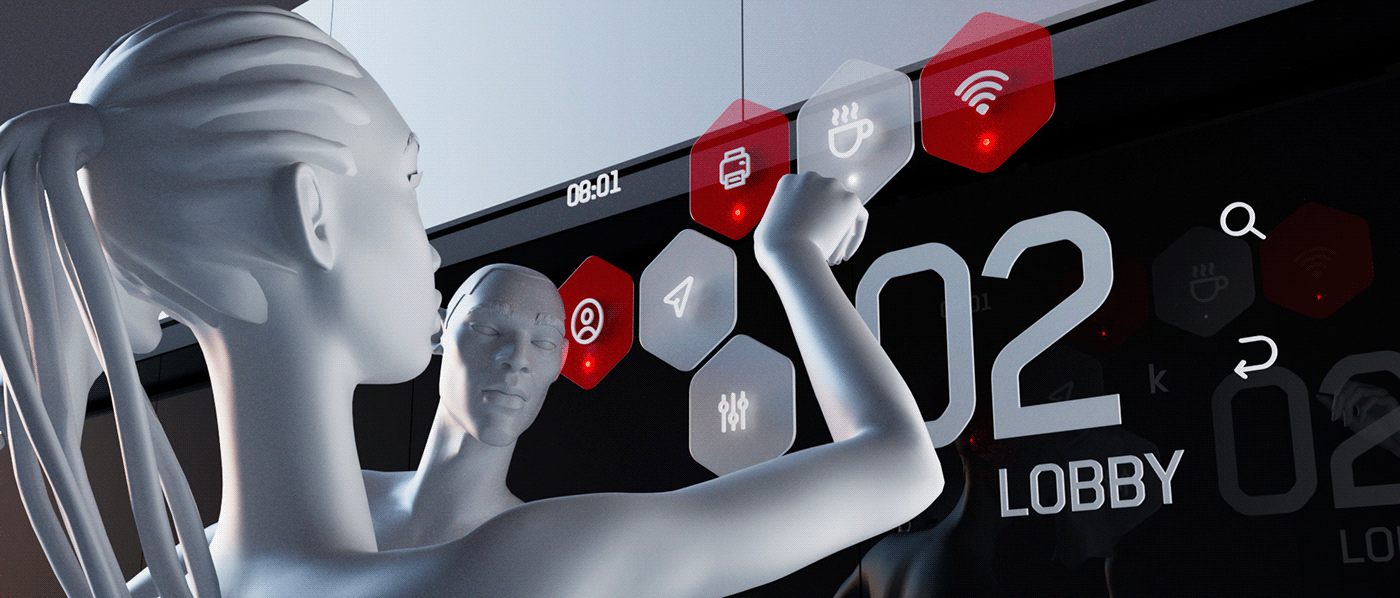
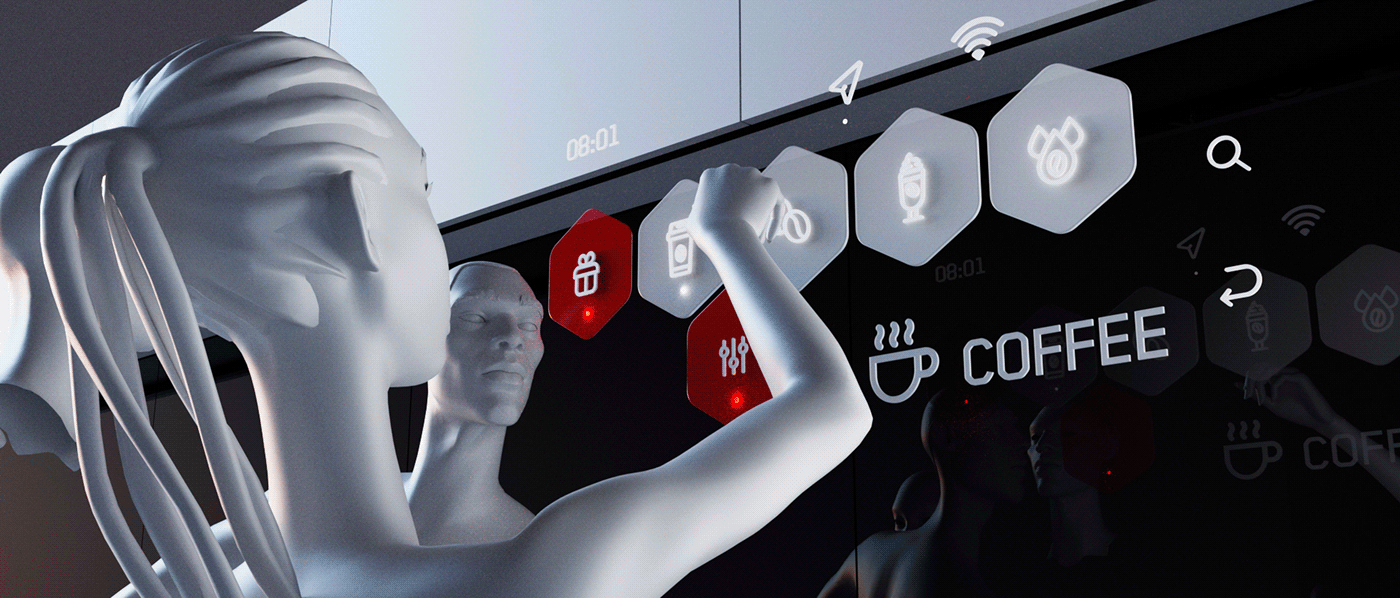
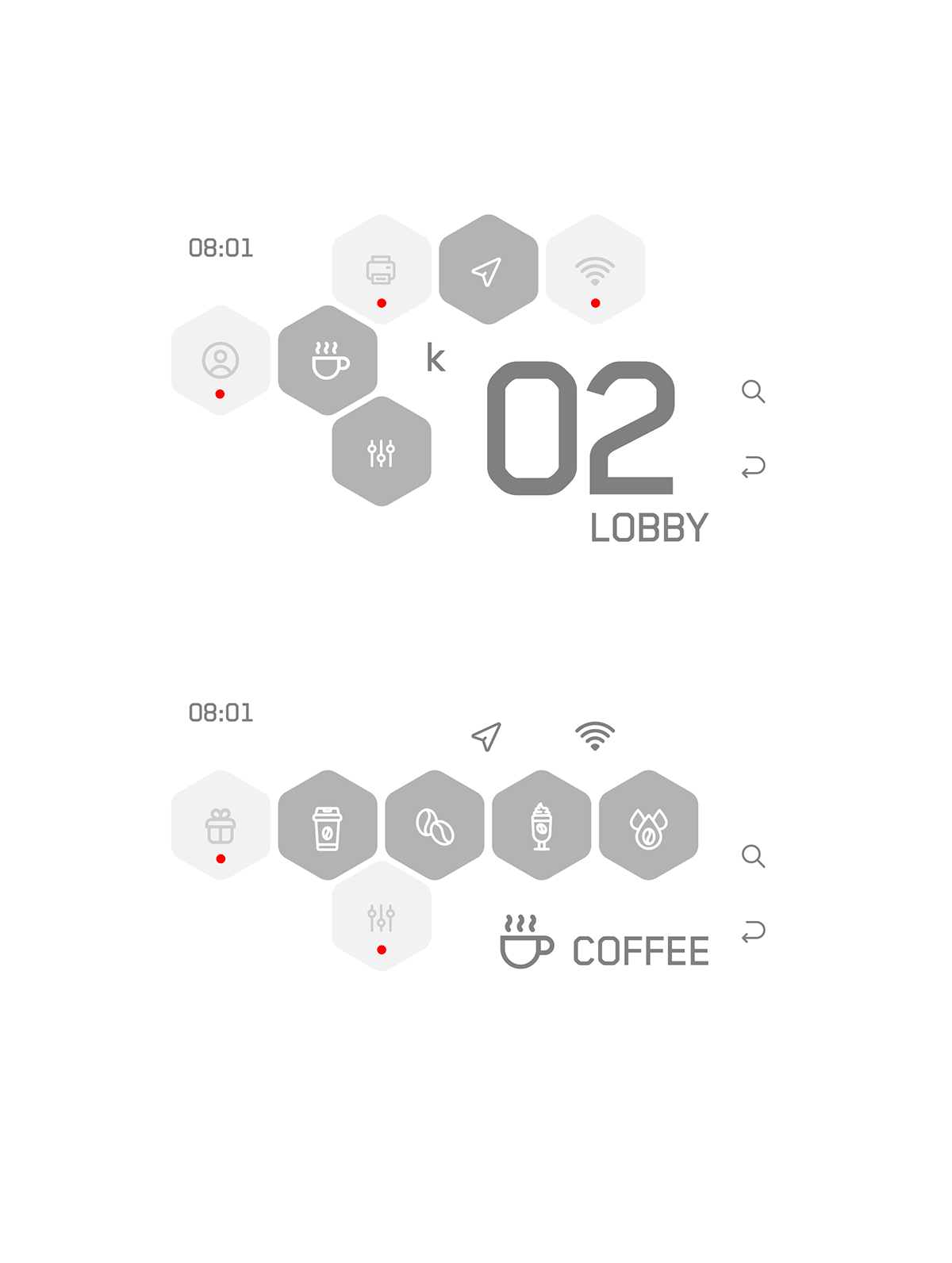



Thanks for watching!
Kaspersky
Design Team: Anna Shkarina, Nikita Morozov
Communication and content team: Dana Serova, Oxana Sotnikova, Ekaterina Burdova, Ivan Shadrin
Dobro
Executive Producer: Timofey Penkov
Creative Director: Alexey Dimkov
Chief Technical Officer: Dmitrii Dolgikh
Producers: Ira Vorobieva, Nina Germanenko
Assistant Producer: Arina Luss
Scriptwriter & Creative Producer: Natasha Sorokina
Supervisor: Stanyslav Rykhlikov
Data Wrangler: Eldar Osmonov
Concept Art: Alexander Zhilkin, Yury Khokhlov, Xander Lihovski, Egor Antonov, Pavel Mostovschikov
Camera Animation: Aslan Dzhantemirov
Character Animation: Anna Pozdeeva, Anna Pavlova, Tatyana Popova, Ksenia Borovaya
Rigging: Anton Pashkanis
Modeling: Marina Pustovaya, Alexander Guryev, Lenar Akhmetzyanov, Alexander Panin, Alexey Melnikov, Alexey Kuptsov
Texturing: Darya Lepustina
Grooming: Svetlana Shamray
Clothes (Concept, Modeling, Texturing, Simulation): Sxema Studio
Layout: Alexander Zakharin
Visualisation: Anton Verevkin, Elena Rasokhina, Dmitrii Dolgikh, Valery Zelensky
Motion Design: Vyacheslav Cho-din-Cho, Damir Valshin, Aslan Dzhantemirov, Alexander Tokar
IT Support: Alexander Sadkov, Vadim Dobrazhan


